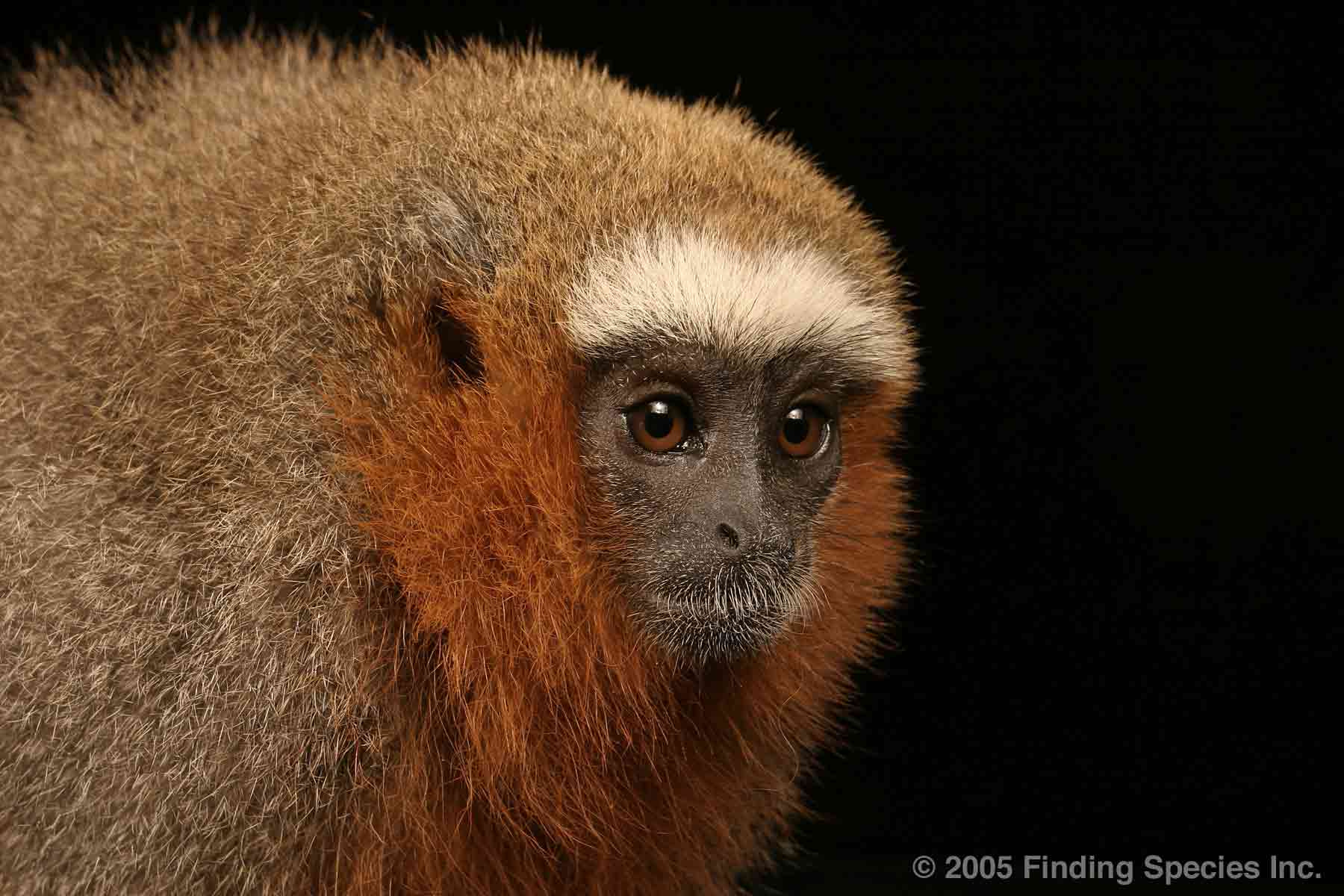Red Titi (Callicebus cupreus discolor) Class: Mammalia Order: Primates Family: Cebidae Genus: Callicebus Species: cupreus discolor
IUCN Status: Not Listed
Red Titi monkeys have strong forelimbs, which they use to move amongst tree branches. Their tales, which are not capable of grasping, have the primary function of stabilization during this locomotion. These monkeys have light-gray colored crowns with light brown or "agouti" colored backs and tails. Their legs, chests, sideburns, and lower arms are reddish in color. Red Titi monkeys weigh between 12 and 15 kilograms (26 and 34 pounds).
There are three subspecies of Callicebus cupreus. Callicebus cupreus discolor inhabits Yasuni National Park. This subspecies is found east of the Andean foothills, and its members seem to prefer living in forests near riverbanks.
Red Titi monkeys forage in the lower levels of the canopy. They are primarily fruit eaters, although they have been known to eat invertebrates, flowers, pollen, and have made leaves a part of their diet. Group sizes range from one to five individuals and consist of a pair which mates for life and their offspring. Both males and females disperse from their natal groups (the groups where they were born). Mating pairs spend much time either huddled together, with their tails intertwined, or grooming each other. Both sexes participate in the raising of offspring, with the young spending the majority of the time with their fathers. Social play between the father and child is common.
Red Titis have an elaborate system of communication that includes vocal, visual, olfactory (smelling) and tactile gestures. These gestures are used both for communication between family members and to indicate aggression towards other family groups that are potential competitors. These monkeys reproduce about once a year and have a gestation period (the period between conception and birth) of 128.6 days. Even though they may be physically capable of doing so, mature females will not become pregnant while living with their parents.
(http://members.tripod.com/uakari/callicebus_cupreus.html)
CLICK HERE FOR MORE EXTRAORDINARY
ANIMALS and PLANTS OF YASUNÍ,
THE MOST BIODIVERSE FOREST KNOWN ON EARTH
Yasuní Biodiversity Main Page
|

